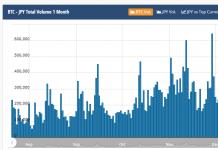Длякожного методу executes виконується функція once для кожного елемента array.
Source для цього interactive example is stored in GitHub repository. Якщо ви знайдете, щоб розширити проектні приклади, повторити clone https://github.com/mdn/interactive-examples і виконати додаткові запити.
Syntax arr .forEach(callback(currentValue [, index [, array]]) [, thisArg ]) Parameters callback Function для execute on each element. Існують відповіді між одним і трьома arguments: currentValue The current element being processed in the array.index Optional The index currentValue in the array.
array Optional The array forEach() був названий upon.
the value of the element
index of the element
the Array object being traversed
Якщо цейArg параметр є виконаний дляEach() , він буде використовуватися як callback"s this value.
Це не може бути перерва або перерва дляEach() проміжок інших, якщо throwing an exception. Якщо ви потребуєте такий behavior, то дляEach() метод є wrong tool.
Early termination може бути зроблено з:
Array методів: every() , some() , find() , і findIndex() test the array elements with predicate returning truthy value to determine if further iteration is required.
Examples No operation for uninitialized values (sparse arrays) const arraySparse = let numCallbackRuns = 0 arraySparse.forEach(function(element)( console.log(element) numCallbackRuns++ )) console.log("numCall back / 3 // 7 // numCallbackRuns: 3 // Comment: Як ви можете повідомити значення між 3 і 7 didn"t invoke callback function. "item3"] const copy = // before for (let i = 0; i< items.length; i++) { copy.push(items[i]) } // after items.forEach(function(item){ copy.push(item) }) Printing the contents of an arrayNote: У відповідь на відображення вмісту array в контролері, ви можете використовувати console.table() , які друковані версії array.
Наступні приклади ілюструють альтернативні приклади, використовуючи дляEach() .
Наступні коди logs a line for each element in an array:
Функція logArrayElements(element, index, array) ( console.log("a[" + index + "] = " + element) ) // Notice that index 2 is skipped, since there is no item at // that position in the array... .forEach(logArrayElements) // logs: // a = 2 // a = 5 // a = 9
За допомогою цьогоArgThe following (contrived) example updates an object"s properties from each entry in the array:
Function Counter() ( this.sum = 0 this.count = 0 ) Counter.prototype.add = function(array) ( array.forEach(function(entry) ( this.sum += entry ++this.count ), this ) // ^---- Note ) const obj = Counter() obj.add() obj.count // 3 obj.sum // 16
Безпосередньо цей параметр архіву (це) забезпечений дляEach() , він проходить до callback each time it"s invoked.
An object copy functionНаступні коди створюють копію given object.
Вони є різними способами до створення копії object. Наступна мова йде тільки про те, як розглянути, як розгорнути список Array.prototype.forEach() works by using ECMAScript 5 Object.* meta property functions.
Function copy(obj) ( const copy = Object.create(Object.getPrototypeOf(obj)) const propNames = Object.getOwnPropertyNames(obj) propNames.forEach(function(name) ( const desc = Object.getOwnPropertyDescriptor(obj, name) Object .defineProperty(copy, name, desc) )) return copy ) const obj1 = ( a: 1, b: 2 ) const obj2 = copy(obj1) // obj2 looks like obj1 now
Якщо array is modified during iteration, other elements might be skipped.The following example logs "one" , "two" , "four" .
When the entry containing the value "two" is reached, the first entry of the whole array is shifted off-resulting in all remaining entries moving up one position. Because element "four" is now at an earlier position in the array, "three" will be skipped.!}
forEach() does not make a copy of array before iterating.
Let words = ["one", "two", "three", "four"] words.forEach(function(word) ( console.log(word) if (word === "two")) ( words.shift( ) ) )) // one // two // four
Flatten an arrayНаступні приклади є тільки для того, щоб розпізнати purpose. Якщо ви хочете, щоб залучити до використання методів, ви можете використовувати Array.prototype.flat() (який exppected до роботи з ES2019, і є виконаний в деяких браузерах).
/** * Flattens passed array в одному dimensional array * * @params (array) arr * @returns (array) */ function flatten(arr) ( const result = arr.forEach((i) => ( if (Array.) isArray(i)) ( result.push(...flatten(i)) ) else ( result.push(i) ) )) return result ) // Usage const problem = , 8, 9]] flatten(problem) / /
Знайти про використання Promises or async functions ratings = let sum = 0 let sumFunction = async function (a, b) ( return a + b ) ratings.forEach(async function(rating) ( sum = await sumFunction(sum, rating) ) ) console.log(sum) // Expected output: 14 // Actual output: 0 Specifications| ECMAScript Latest Draft (ECMA-262) |
Draft | |
| ECMAScript 2015 (6th Edition, ECMA-262) Визначення "Array.prototype.forEach" в цій specification. |
Standard | |
| ECMAScript 5.1 (ECMA-262) Визначення "Array.prototype.forEach" в цій specification. |
Standard | Initial definition. Implemented JavaScript 1.6. |
Компактність таблиці в цій сторінці генерується з структурованих даних. Якщо ви знайдете, щоб дізнатися про ваші дані, клацніть на https://github.com/mdn/browser-compat-data і пишуть.
Update compatibility data on GitHub
| Desktop Mobile Server | ||||||||||||
| Chrome Full support 1 | Edge Full support 12 | Firefox Full support 1.5 | IE Full support 9 | Opera Full support Yes | Safari Full support 3 | WebView Android Full support ≤37 | Chrome Android Full support 18 | Firefox Android Full support 4 | Opera Android Full support Yes | Safari iOS Full support 1 | Samsung Internet Android Full support 1.0 | nodejs Full support Yes |
Останнє оновлення: 26.03.2018
Об'єкт Array є масивом і надає ряд властивостей і методів, за допомогою яких ми можемо керувати масивом.
Ініціалізація масивуМожна створити порожній масив, використовуючи квадратні дужки або конструктор Array:
Var users = новий Array(); var people = ; console.log(users); // Array console.log(people); // Array
Можна відразу ж ініціалізувати масив деякою кількістю елементів:
Var users = new Array("Tom", "Bill", "Alice"); var people = ["Sam", "John", "Kate"]; console.log(users); // ["Tom", "Bill", "Alice"] console.log(people); // ["Sam", "John", "Kate"]
Можна визначити масив і по ходу визначати в нього нові елементи:
Var users = новий Array(); users = "Tom"; users = "Kate"; console.log(users); // "Tom" console.log(users); // undefined
При цьому не важливо, що за замовчуванням масив створюється із нульовою довжиною. За допомогою індексів ми можемо підставити на конкретний індекс масиві той чи інший елемент.
lengthЩоб дізнатися довжину масиву, використовується властивість length:
Var fruit = новий Array(); fruit = "яблука"; fruit = "груші"; fruit = "зливи"; document.write("У масиві fruit" + fruit.length + "елемента:
"); for(var i=0; i< fruit.length; i++)
document.write(fruit[i] + "
");
За фактом довжиною масиву буде індекс останнього елемента із додаванням одиниці. Наприклад:
Var users = новий Array(); // у масиві 0 елементів users = "Tom"; users = "Kate"; users = "Sam"; for(var i=0; i 0) ( result = true; ) return result; ); var passed = numbers.every(condition); document.write(passed); // false
У метод every() як параметр передається функція, що представляє умову. Ця функція приймає три параметри:
Function condition(value, index, array) ( )
Параметр value представляє поточний елемент масиву, що перебирається, параметр index представляє індекс цього елемента, а параметр array передає посилання на масив.
У цій функції ми можемо перевірити передане значення елемента на відповідність будь-якій умові. Наприклад, у цьому прикладі ми перевіряємо кожен елемент масиву, чи більше він нуля. Якщо більше, то повертаємо значення true, тобто елемент відповідає умові. Якщо менше, то повертаємо false – елемент не відповідає умові.
У результаті, коли відбувається виклик методу numbers.every (condition), він перебирає всі елементи масиву numbers і по черзі передає їх у функцію condition. Якщо ця функція повертає значення true для всіх елементів, то метод every() повертає true . Якщо хоча б один елемент відповідає умові, то метод every() повертає значення false .
some()Метод some() схожий метод every() , тільки він перевіряє, чи відповідає хоча б один елемент умові. І тут метод some() повертає true . Якщо елементів, що відповідають умові, у масиві немає, то повертається значення false:
Var numbers = [1, -12, 8, -4, 25, 42]; function condition(value, index, array) ( var result = false; if (value === 8) ( result = true; ) return result; ); var passed = numbers.some(condition); // true
filter()Метод filter() , як some() і every() приймає функцію умови. Але при цьому повертає масив тих елементів, які відповідають цій умові:
Var numbers = [1, -12, 8, -4, 25, 42]; function condition(value, index, array) ( var result = false; if (value > 0) ( result = true; ) return result; ); var filteredNumbers = numbers.filter(condition); for(var i=0; i< filteredNumbers.length; i++)
document.write(filteredNumbers[i] + "
");
Висновок у браузері:
1 8 25 42
forEach() і map()Методи forEach() і map() здійснюють перебір елементів і виконують з ними певні операції. Наприклад, для обчислення квадратів чисел у масиві можна використовувати наступний код:
Var numbers = [1, 2, 3, 4, 5, 6]; for(var i = 0; i = 0; --index) ( console.log(a); )
Тим не менш, у сучасних движках JavaScript подібні ігри з оптимізацією зазвичай нічого не означають.
Тим не менш, у деяких випадках, таких як перебір розріджених масивів , for ... in може виявитися корисним, якщо тільки дотримуватися при цьому запобіжних заходів, як показано в прикладі нижче:
// a - розріджений масив var a =; a = "a"; a = "b"; a = "c"; for (var key in a) ( if (a.hasOwnProperty(key) && /^0$|^\d*$/.test(key) && key


























